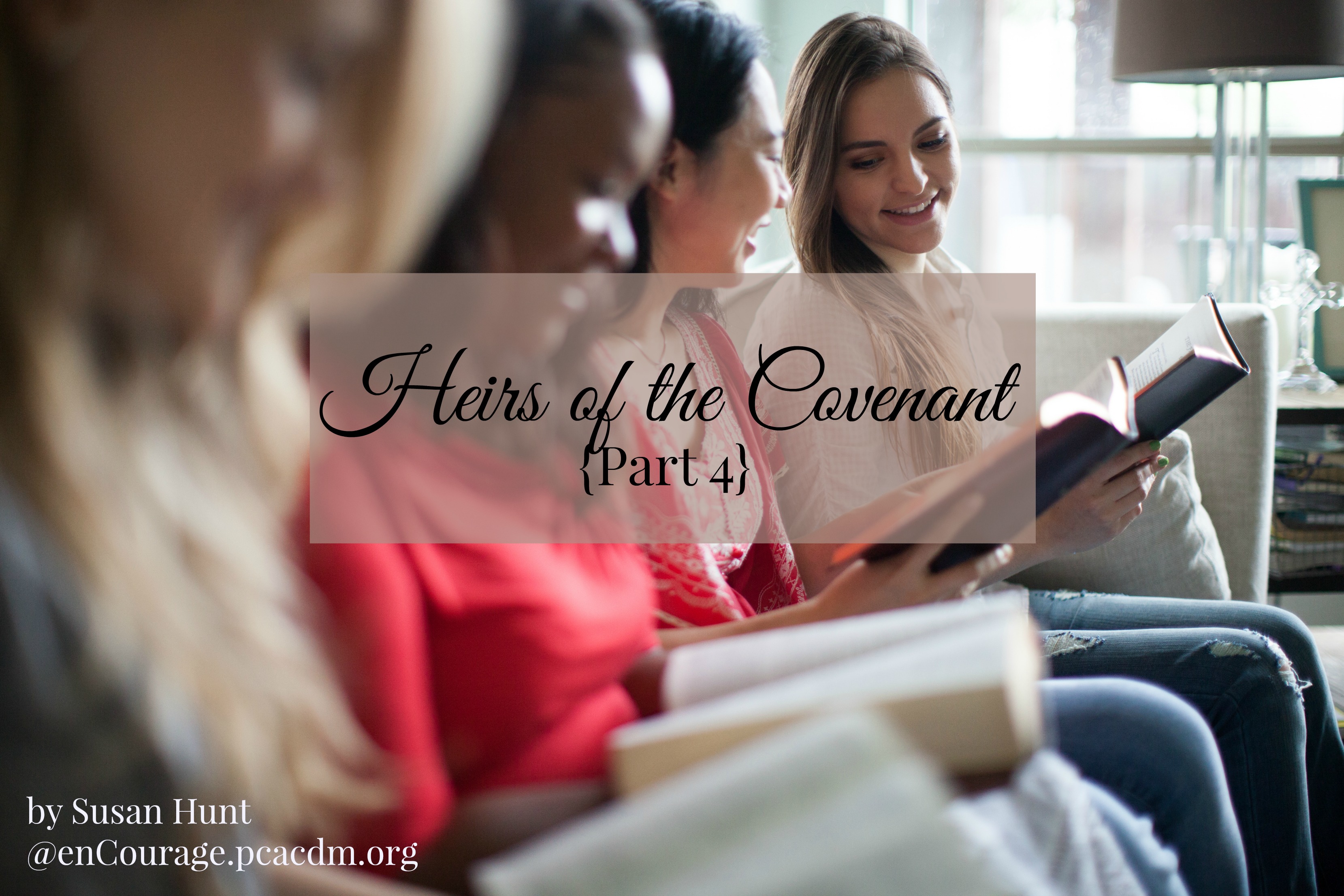SUSAN HUNT | CONTRIBUTOR
Editor’s note: This is Part 4 in an ongoing series about Susan Hunt’s book, Heirs of the Covenant.
In Heirs of the Covenant we are reminded of the opportunity we have to point others – both those within the church and those outside – to Christ. What a great encouragement as we see the instability of a chaotic world in which we live – to point to the stability of a covenant connection with the One True God based on the power of the Gospel!—Sherry Lanier
When I was writing Heirs, I tried to visualize what it would look like to live covenantally. I listed things that characterize the covenant. Identifying characteristics made it easier to apply the doctrine of covenant to life and ministry.
The following excerpts are from pages 30-33 .
Characteristics of the Covenant
The covenant is relational because it is restorative. The covenant reconciles us to God and defines the way we live in relationship with Him. He refers to us in tender, relational language as His children (Deuteronomy 14:1), His treasured possession (Exodus 19:5). We are given specific promises, obligations, responsibilities, and privileges. The covenant also establishes and defines our relationships with one another as God’s children. When Jesus was asked which is the greatest commandment, He answered in relational language: “’Love the Lord your God with all our heart and with all our soul and with all your mind.’ This is the first and greatest commandment. And the second is like it: ‘Love your neighbor as yourself’” (Matthew 22:37-39).
The covenant is sovereignly initiated. Jesus said, “You did not choose me, but I chose you and appointed you to go and bear fruit—fruit that will last” (John 15:16).
The covenant is sovereignly sustained and thus eternally secure. God is a covenant-keeper who is able to keep us in the palm of His hand. “My sheep listen to my voice; I know them, and they follow me. I give them eternal life, and they shall never perish, no one can snatch them out of my hand. My Father, who has given them to me, is greater than all; no one can snatch them out of my Father’s hand. I and the Father are one” (John 10:27-30).
The covenant is Trinitarian. God the Father made a covenant with His Son. If Jesus would pay the penalty for sin and be the substitute, God would give Him a people. The Holy Spirit was also a party in this covenant. He would be the one who would regenerate God’s people, He would give them a new heart so they could believe. This is the covenant of grace. The Father purposed redemption. Jesus accomplished redemption. The Holy Spirit seals it to our hearts (Ephesians 1:3-14).
The covenant is corporate. The first Adam represented all mankind. The second Adam, Christ, represented His people before the judgment seat of God. Each individual must respond in faith, but the covenant is not individualistic, because Christ is the Mediator on behalf of His people. The Lord said to Abraham, “I will make you into a great nation” . . . (Genesis 12:2). The angel said to Joseph, “. . . you are to give him the name Jesus, because he will save his people from their sins” (Matthew 1:21). Paul wrote to the church in Ephesus, “You were separate from Christ . . . But now in Christ Jesus you who once were far away have been brought near through the blood of Christ. Consequently, you are no longer foreigners and aliens, but fellow citizens with God’s people and members of God’s household” (Ephesians 2:12-13, 19).
The covenant is generational. God’s faithfulness is generational: “The children of your servants will live in your presence; their descendants will be established before you” (Psalm 102:28). Our responsibility is generational. The promises, privileges, and obligations are to be passed from generation to generation. “I will utter hidden things, things from of old—what we have heard and known, what our fathers have told us. We will not hide them from their children; we will tell the next generation . . . so the next generation would know them, even the children yet to be born, and they in turn would tell their children” (Psalm 78:2-6).
The covenant is compassionate. When Moses asked to see God’s glory, God put him in a cleft in the rock, covered him with His hand, and passed in front of him proclaiming, “the Lord, the Lord, the compassionate and gracious God, slow to anger, abounding in love and faithfulness” (Exodus 34:6). God’s people show His glory through ministries of compassion done in His name.
The covenant is integrative. It is the underlying unity of Scripture. It is the framework through which we look at Scripture. Thus it should integrate, order, and govern our thinking about the world and about our lives. It centers all of life on Jesus. A comprehensive, unifying world and life view begins with God. He is our reference point. In Him we “live and move and have our being” (Acts 17:28). Our purpose is to glorify Him.
The covenant is exclusive. “You shall have no other gods before me . . . ” (Exodus 20:3-5).
The covenant is inclusive. We are commissioned to “Go into all the world and preach the good news to all creation” (Mark 16:15).
Reflections for Women’s Ministry
How are these covenant characteristics reflected in your women’s ministry?
Use these characteristics to formulate a purpose statement for your events and ministries, to frame your publicity, and to evaluate your plans.
How is your women’s ministry discipling women to reflect these characteristics in their relationships?


